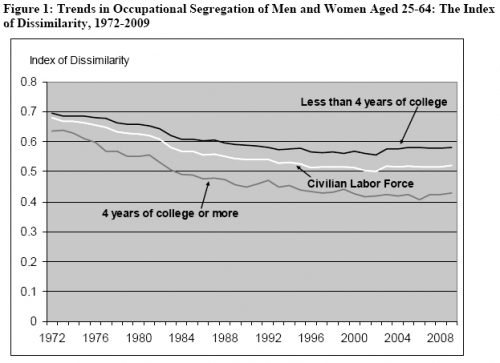
Leah S. asked us to talk about Beyoncé’s new video, Why Don’t You Love Me, and I think Ann at Feministing had some interesting things to say, so I’m going to borrow her insights.
Noting both Beyoncé’s video and the recently released video for Babyfather by Sade, Ann observes:
…both Sade and Beyonce are cast as “traditional” homemakers in retro-styled videos. Beyonce’s retro romp seemed (at least to me) a bit tongue-in-cheek, whereas Sade pretty earnestly makes Jell-O and keeps house. But regardless, they’re both wearing vintage-looking sexy slips, making dinner, hanging out at home during the day, etc.
But they’re not simply nods to the ’50s. Because both women are black, the videos also potentially subvert the idea of the perfect housewife of that era. Ann continues:
I know there were certainly upper-middle-class women of color in the ’50s and ’60s, but this image of the happy-but-secretly-unhappy housewife is stereotypically white. By virtue of race, Beyonce and Sade are twisting that stereotype.
And that twist is very political. Consider this: In American politics today, the “perfect” mother is one who does not work and stays home with her children. Unless she’s poor. Poor women who want to stay home with their children are called lazy, welfare cheats. If you’re poor, you can only be a good mother by working.
Because race and class are correlated in U.S. society, and the “welfare queen” is a race-specific trope that usually refers to poor, black women, these videos might very well challenge the white-middle/upper-class-homemaker conflation.
Beyoncé, Why Don’t You Love Me:
Sade, Babyfather:
Lisa Wade, PhD is an Associate Professor at Tulane University. She is the author of American Hookup, a book about college sexual culture; a textbook about gender; and a forthcoming introductory text: Terrible Magnificent Sociology. You can follow her on Twitter and Instagram.






